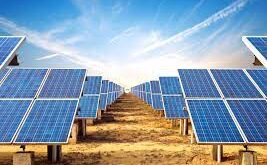The Covid-19 pandemic and an ongoing shift to renewables are accelerating an exodus of the world’s largest oil and gas companies from South-east Asia, dimming prospects for investment and raising the possibility of supply shortages once demand recovers.
US and European oil majors have either announced or are thought to be in talks to shed US$5.7 billion (S$7.7 billion) of oil and gas assets in South-east Asia, according to Oslo-based oil and gas consultancy Rystad Energy.
ExxonMobil has a shortlist of buyers for its US$3 billion stake in Malaysian offshore oil assets, Bloomberg News said late last month.
Despite rebounding from lows of less than US$20 a barrel this year, oil is still at a five-year low.
Demand for oil products in Asia-Pacific will fall by 8 per cent this year, according to Britain-based energy consultancy Wood Mackenzie.
But demand will return, climbing by a quarter through 2040, even as renewables take up a bigger slice of energy markets, the consultancy said.
Renewables will account for a third of energy supply in the region by the end of the decade, up from about 15 per cent currently, according to the International Energy Agency.
The region will remain vulnerable to sudden hiccups in supply.
“Demand is going in one direction and supply is going the other way,” said Mr Andrew Harwood, analyst at Wood Mackenzie in Singapore.
To be sure, Big Oil’s shift out of South-east Asia dates back to the end of the commodity boom, which triggered a slide in energy prices.
Oil majors pulled up stakes from blocks that date back decades and moved to new prospects, such as US oil shale.
Regional governments also played a role, insisting that as production sharing agreements expired, state-owned enterprises took over.
If market conditions and regulatory environments were weighing against investment decisions in the region, Covid-19 is making it worse.
Rounds of bidding on exploration licences from Myanmar to Indonesia are on hold. Malaysia, for instance, has delayed decisions on more than a dozen offshore licences for exploration and technical studies until January.
Investment in so-called upstream oil and gas production, which includes drilling and exploration, will fall by 30 per cent in Asia-Pacific, with spending in the region on rigs, trucks and other equipment to shrink by US$90 billion by 2025, Wood Mackenzie said.
The centre of gravity of the region’s energy sector is expected to shift to smaller independent oil companies and national oil companies that may lack the deep pockets and skills to breathe new life into flagging resources, analysts said.
Indonesia’s Pertamina, for instance, has struggled to reinvigorate its 54-year-old Mahakam oil and gas reserve in East Kalimantan.
Gas output there is roughly a quarter below where it was when France’s Total and Japan’s Inpex handed over control to the state-owned company in 2018.
More production is on the way. Construction of three offshore rigs at Mahakam is expected to fill half the gap once construction wraps up at the end of next year.
In a separate development, Chevron agreed to a US$150 million deal this month to drill more than 100 new wells at the Rokan block in Riau before handing over next August.
The move – to shore up production before the handover – suggests renewed urgency to boost production after two years of muddle at Mahakam, said Singapore-based Rystad analyst Eugene Chiam.
“Pertamina is avoiding the mistakes of Mahakam,” Mr Chiam said.
As the majors shed their mature assets, smaller players are moving in.
Singapore-based Jadestone Energy, which has oil wells in Australia and New Zealand, is developing natural gas sites in Vietnam, the Philippines and Indonesia. For now, those ambitions are on hold pending regulatory approval and because of the Covid-19 pandemic.
Still, chief executive Paul Blakeley said that despite the pandemic, the underlying business case for expanding into Asia remains.
“Covid-19 doesn’t change the immediate short-term principles regarding South-east Asia’s energy shortage,” he said.
“The gap between the supply of energy and demand is only getting wider.”

 Iran Energy News Oil, Gas, Petrochemical and Energy Field Specialized Channel
Iran Energy News Oil, Gas, Petrochemical and Energy Field Specialized Channel



